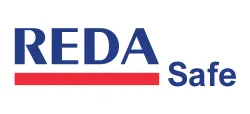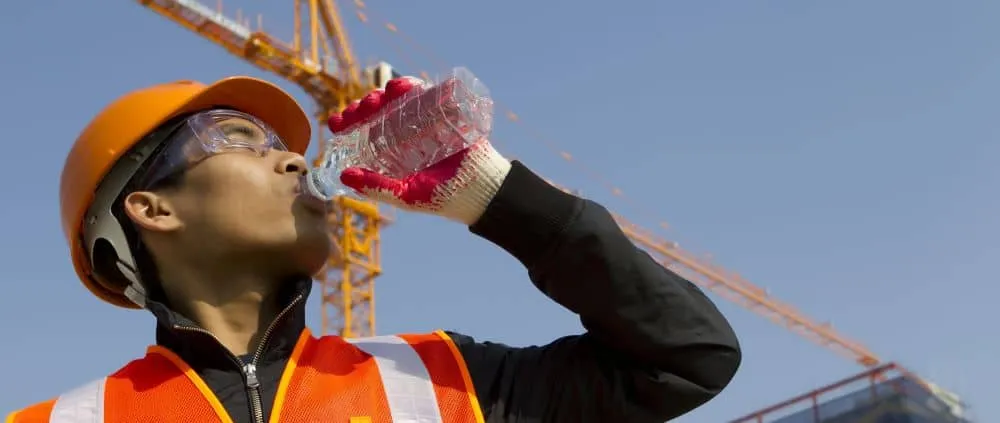Introduction
Staying hydrated is crucial for everyone, especially in the workplace. However, certain jobs make keeping up with your water intake a bigger challenge. Workers in construction, areas with contamination risks, manufacturing settings, confined spaces, outdoor roles, and spaces that are either too hot or lack proper ventilation must be extra vigilant about hydration.
These specific work environments often expose employees to extreme conditions, like intense heat, which can quickly lead to dehydration. Additionally, the physical demands of these jobs, combined with wearing heavy, air-tight personal protective equipment (PPE), increase the risk of not getting enough water throughout the day.
Manufacturing Facilities
Manufacturing plants often operate in hot conditions or areas filled with chemicals, dust, or dangerous substances, making it challenging or risky to drink water on the job.
In settings where activities generate a lot of dust, workers must wear masks to protect their breathing. This means they can only take off these masks to drink water when they step out of the work zone. Additionally, wearing protective gear like coveralls can block sweat from evaporating off the skin, hindering the body's natural cooling process.
Confined Spaces
Working in tight spaces brings unique hydration challenges due to factors like higher temperatures, air quality issues, pollutants, hard labor, and personal protective equipment (PPE).
Take, for example, the task of entering and cleaning a drilling mud tank. This is heavy-duty work in an environment where the air may be filled with hazardous substances like hydrogen sulfide (H2S). To stay safe, workers need to wear full protective gear, including suits that shield them from the mud and devices that provide clean air. This setup makes it tough to drink water and stay hydrated.
Construction Sites
In many construction environments, workers face the relentless sun and intense humidity, all while engaging in hard physical labor for hours on end. Without proper hydration, those in construction are at a high risk of falling prey to heat-related health issues quickly.
Outdoor Work
Outdoor work comes in many forms, each with its unique risks, but a common issue across the board is the high risk of dehydration.
For example, in seismic exploration efforts, workers often have to walk 7.5 to 10 miles daily. They carry and lay out geophones or detonate seismic charges, often navigating through swamps and secluded wooded areas under the intense heat and humidity. In such demanding conditions, merely drinking water when feeling thirsty isn't enough to prevent dehydration.
Factors Contributing to Heat Exposure
Workplace temperature guidelines often don't set strict maximums. Instead, they might point to the American Conference of Governmental Industrial Hygienists (ACGIH) recommendations for managing heat stress and exposure. It's wise to consult these standards when planning tasks to gauge the associated risks.
However, temperature isn't the sole concern when it comes to setting exposure limits. Other important factors include:
- The balance between work time and rest periods
- The intensity of the tasks performed
- The type of clothing and personal protective equipment (PPE) used
- Levels of humidity
- Amount of direct sunlight
- Ventilation and air circulation
- Workers' adaptation to the heat
- The overall physical requirements of the job
Knowing the Signs
Identifying dehydration early is key, and workers should be on the lookout for its symptoms, such as:
- Urine that is dark in color
- Headaches
- Feeling dizzy
- Experiencing confusion
- Difficulty concentrating
- A dry mouth
- Skin that feels dry
- Excessive sweating
The Effects of Dehydration
Heat-related illnesses happen when the body can't control its temperature, often because of dehydration. Sweating cools the body down, but it needs water to be able to sweat.
Dehydration's impact varies widely, from feeling thirsty and experiencing muscle cramps to more severe symptoms like nausea, dizziness, and in extreme cases, it can even lead to death. I've observed dehydration issues that were as minor as mild cramps to those severe enough to need short-term hospital care.
Heat Stroke
Without prompt treatment, heat exhaustion can progress to heat stroke, a serious and potentially deadly condition if body temperature rises above 104ºF.
In cases of heat stroke, individuals may stop sweating, hindering the body's ability to cool down. This can lead to severe consequences, including nervous system dysfunction and organ failure.
Often, those experiencing heat stroke aren't aware of their condition, making it crucial for their colleagues or supervisors to recognize the signs and act quickly. Immediate medical intervention is essential for their survival.
Heat Exhaustion
If not addressed, heat cramps can escalate into heat exhaustion, which also stems from not drinking enough water and a sodium deficit.
Symptoms of heat exhaustion include a decrease in blood pressure, an abnormal heartbeat, feeling faint, heavy sweating, cool skin, and muscle cramps. Just like with heat cramps, it's crucial for anyone experiencing these signs to seek out a cooler environment and drink fluids to rehydrate.
Heat Rash
Working in hot conditions often leads to heat rash, the most frequent problem encountered. It's characterized by symptoms such as itchiness, red spots in areas prone to sweating, and discomfort or pain in those sweaty spots.
Heat Cramps
Heat cramps are a result of not drinking enough water and not having enough sodium in your system. They can make your muscles feel tight and painful. This condition can also be an early indicator of heat exhaustion, so it's important for anyone experiencing these symptoms to find a cooler place and drink plenty of fluids.
Steps to Preventing Dehydration in the Workplace
Maintaining hydration is about consistent, small actions to ensure you're drinking enough water, managing exposure to heat, and considering other important factors.
To avoid dehydration on the job, it's crucial to:
- Drink water throughout the day.
- Hydrate before you start, during your work, and after you're done.
- Organize work tasks with hydration needs and the risk of heat stress in mind.
- Teach workers about the importance of drinking enough water.
- Use the ACGIH guidelines for thermal stress as a reference for work plans, policies, and procedures.
- Ensure there are balanced work-rest cycles.
- Schedule work for cooler times of the day to lessen the chance of heat-related problems.
- Rotate job roles to limit exposure and allow time for drinking water and cooling down.
- Provide access to water and drinks with electrolytes, and set up breaks in a place that's cool and comfortable.
- Include heat stress and hydration considerations in risk assessments and meetings before starting tasks.
- Train employees to spot and handle signs of heat-related illnesses.
- Move to a cooler place and rest if you start feeling dizzy, tired, or lightheaded.
- Wear clothes that are light in color and weight.
- Select the appropriate personal protective equipment for the weather conditions.
Hydration Has Never Been Optional
Certain workplaces may pose challenges to staying hydrated, yet this shouldn't lead to ignoring the need for it. Worker safety hinges on making sure they consume enough water and electrolytes to keep their bodies working properly.
By focusing on education, setting the right policies and procedures, and careful planning, it's possible to carry out work safely while making hydration a top priority, regardless of the environment.
Conclusion
In conclusion, tackling hydration challenges in demanding work environments is crucial for maintaining health and safety on the job. Whether it's construction sites, manufacturing plants, outdoor exploration, or any other setting that exposes workers to heat, contaminants, or physical exertion, staying hydrated is non-negotiable. Recognizing the signs of dehydration, understanding the importance of regular fluid intake, and implementing strategic measures to ensure accessibility to water and rest are key steps.
Educating workers, adapting work plans to include hydration breaks, and creating policies that prioritize health are essential for safeguarding teams against heat-related illnesses. A well-hydrated workforce is not only safer but also more productive and satisfied in their roles. For more detailed insights on this topic, we recommend reading "7 Fundamental Hydration Facts Every Employee Needs to Understand." This article further explores the critical aspects of hydration every employee and employer should be aware of.

